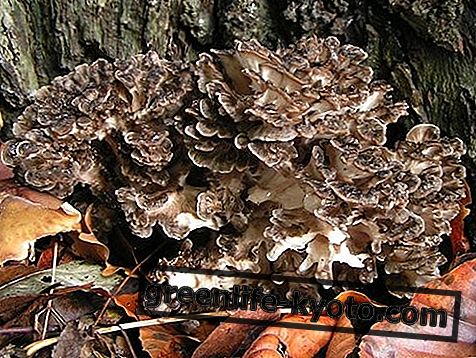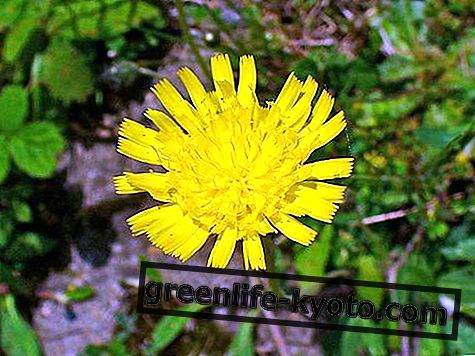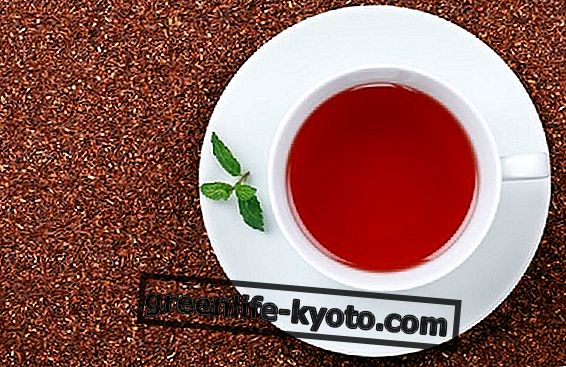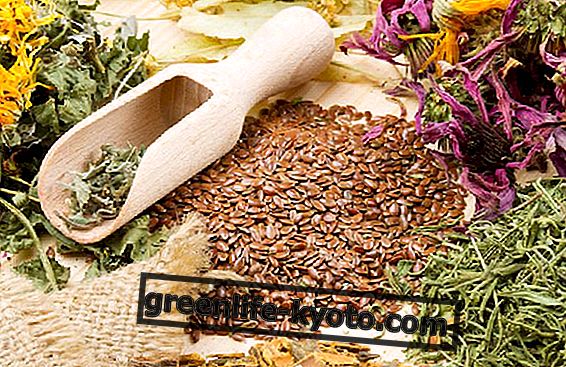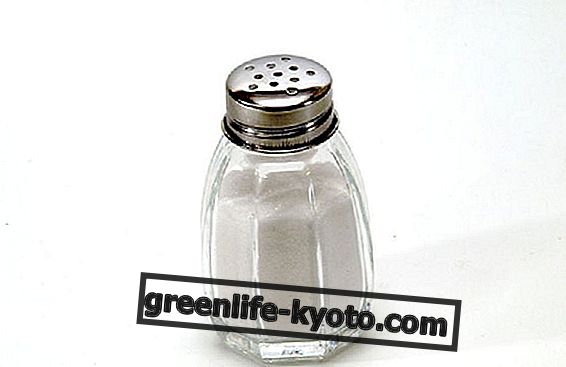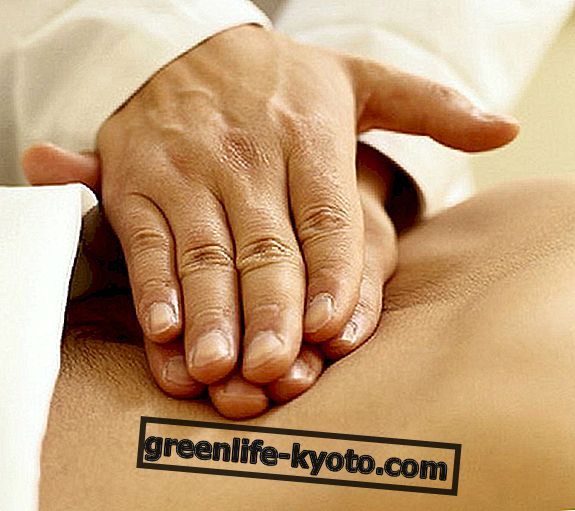What is headache and how many types of headache exist? What are the symptoms and causes? What are the most effective natural remedies for headaches?
The headache is a feeling of oppression at the level of the temples that conditions the intentions and intentions of the day, not to mention the speed of action and decision. The scientific term of what is commonly referred to as headache is headache but it is necessary from time to time to identify the symptoms in order to classify a disorder that has at least 150 different subtypes. Let's find out how to cure it.
>
>
How migraine is born

Headache symptoms
The most relevant subtypes are migraine, tension-type headache (the most frequent and may be episodic or chronic) and cluster headache (more rare, characterized by violent pains generally in the orbital and frontal area, almost fixed hours).
Migraine is used instead when at least 5 episodes occur that meet certain criteria of attack duration (from 4 to 72 hours) and present characteristics such as: unilateral localization, throbbing pain, excessive fatigue in reaction to daily actions such as climbing stairs.
The symptoms associated with headaches are nausea, excessive sensitivity to light or darkness. Sinusitis, acute or chronic inflammation of the paranasal sinuses, is a fairly faithful companion of migraine.
Causes
It is not easy to identify a single cause for the onset of headache. This disorder, in fact, may depend on several factors, often combined together.
The tension-type headache, for example, depends on inflammations and contractions of the shoulder, neck and head muscles ; it is usually sporadic but in some cases it can become chronic. In this case the causes can be:
- physical exertion or incorrect posture;
- smoking and alcohol abuse;
- stress;
- fatigue.
Migraine, on the other hand, arises when there is an influx of minor blood into the blood vessels of the head and neck, and greater to the brain, due to a narrowing of the vessels themselves. A minor percentage of people suffer and may depend on:
- stres, fatigue and insomnia;
- genetic factors;
- alcohol and smoking abuse;
- both active and passive smoking;
- use of particular medicines (such as the contraceptive pill).
Diagnosis
The diagnosis of primary headache is usually made by the doctor after a thorough physical examination of the patient and his description of the symptoms. When the headache is of recent onset or worsens suddenly, one may find that there is a secondary form.
It is therefore necessary to use instrumental tests such as an electroencephalogram or a cranial CT, after investigating factors such as familiarity (if first-degree relatives suffer from some form of headache), the onset and duration of the attacks, the triggering factors of crises, the location and intensity of pain, the presence of associated symptoms, aggravating factors, and any previously treated therapies.
Among the other exams: r nuclear magnetic isonance, a ngio-Tc and angio-Rm, achicentesi.
CURE FOR HEADACHE
Feeding in case of headache
Foods that could potentially trigger or contribute to heighten headaches are divided into three groups :
- Foods rich in histamine, a nitrogenous substance involved in many cellular reactions with a pro-inflammatory action.
They are: fermented cheeses, cured meats, canned foods, some types of fresh fish (tuna, sardines, salmon, anchovy fillet), spinach, tomatoes and pork.
- Foods rich in tyramine : many types of cheese (except Parmesan and mozzarella), salami, fish (caviar, herring, tuna), grapes, figs, potatoes, broad beans, tomatoes, spinach and cauliflower.
- Common use foods containing bisulfites, substances added to foods for their anti-mold action such as wine, beer, soft drinks, vinegar and canned foods.
Equally important are the digestion and assimilation of food by the gastro-intestinal apparatus, because very often digestive difficulties affecting the stomach, liver or intestine and / or the presence of intestinal dysbiosis can trigger or aggravate the incidence of attacks of headache.
Do not underestimate any anemia or lack of particular vitamins. It is therefore preferable to have a natural and above all varied diet with fresh, seasonal, less refined and organic foods.
Do you want to know how to treat headaches in children?

Herbal remedies for headaches
In the treatment of headaches, phytotherapy uses herbal teas, mother tinctures or dry extracts of herbs and medicinal plants with anti-inflammatory, analgesic properties aimed at the osteoarticular system, ie capable of inhibiting the synthesis of prostaglandins (PGE2), responsible for pain and tissue inflammation. Equipped with these properties are:
- The devil's claw is particularly useful in case of tendinitis, osteoarthritis and headache from cervical arthrosis or toothache. The harpagosides contained in the root are considered responsible for the analgesic and antipyretic effects of the plant;
- The Willow and the Spirea ulmaria are considered both "vegetable salicylates". Used successfully in situations that cause pain and inflammation in the muscles and joints, general pain in the neck, neuralgia, flu, and fever.
The plants used in the treatment of muscle-tension headache caused by nervousness, or in the presence of a general irritability picture, have instead an antispasmodic and calming action on the muscles;
- Lemon balm and passionflower: they have sedative and anxiolytic, muscle relaxing and soothing properties of the nervous system;
- Feverfew : it is used in the treatment of migraine, due to the presence of the flavonoids which are responsible for the spasmolytic action on the visceral smooth muscle.
- Finally, the herbal remedies indicated to counteract the migraine linked to the menstrual cycle are endowed with a balancing action on the female hormonal system . These include:
- Agnocasto : ( Vitex agnus castus ) acts on the pituitary gland, exerting an antiestrogenic and antispasmodic effect. This plant is generally used for all those symptoms related to the premenstrual phase, associated with nervousness, irritability, mood swings, anxiety and neurovegetative disorders of menopause.
You can learn more about herbal remedies for headaches

Bach flowers for headaches
Bach flowers represent a gentle and natural therapy, to rebalance the specific altered emotional state that causes the headache, by virtue of the fact that the psyche and emotional states play a role of primary importance in the onset of this disorder.
- Oak induces a state of physical and mental relaxation in those who suffer from an excessive sense of duty that prevents relaxation, rest and therefore the recovery of energy, especially in times of stress and fatigue .
- Elm: reduces anxiety, teaches indulgence to those who expect too much of themselves to collapse under the weight of work and responsibility, because they do not accept their limits.
- Impatiens: slows down the rhythm of the days, counteracting spasmodic tension; helps to accept the natural flow of life, to be carried away by the slow passage of time. Suitable for those suffering from impulsiveness, hyperactivity and impatience.
- White Chestnut brings calmpa and peace to the mint, is indicated for the headache that occurs in people tormented by fixed thoughts, mental hyperactivity, unpleasant concerns that prevent sleep.
- Hornbeam helps those who suffer from acute headaches due to prolonged mental effort. This remedy supports the daily fight against stress and helps you sleep well, allowing your mind to regenerate.
Traditional Chinese Medicine
In traditional Chinese medicine (TCM) the causes of headaches are due to stagnation of liver Qi, Jing del Rene deficiency and Xue stasis. In the first case, we act on BAI HUI, FENG CHI, GAN SHU, JIE XI; in the second case BAI HUI and FENG CHI, to which is added SHEN SHU, TAI XI, WAN GU.
In the case of Xue stagnation, the energy is mobilized by going to work on FENG CHI, SAN YIN JIAO, SHUAI GU.
In Chinese medicine Litchi, thanks to the vasodilatory properties of nicotinic acid, is indicated as a remedy for headaches,
Try to fight headache with plantar reflexology
Aromatherapy for headaches
Among the aromas produced by the aromatic plants used to relieve headaches, we find the balsamic essences that decongest the airways, useful in the treatment of headaches due to sinusitis; and those with a relaxing action on the nervous system, used for the treatment of muscle-tension headache, caused by nervousness and stress. These essential oils can be applied by rubbing them gently on temples and foreheads, or simply inhaled by environmental diffusion, or in aromatic baths, suffumigi, saunas.
- Mint essential oil : its calming action is performed on the central nervous system, therefore it is recommended in all the psychosomatic disorders that cause this disorder, in the treatment of migraine due to environmental factors, such as the change of atmospheric pressure and to give relief to the cervical tensions or in case of tiredness, as it counteracts the stress and psychophysical fatigue.
- Eucalyptus essential oil: it has decongestant, fades and calms irritation of the nasal mucous membranes, thins the phlegm on which it has an expectorant action, ie it facilitates the expulsion of the mucus, in case of headache caused by sinusitis, rhinitis congestion in the upper areas.
- Essential oil of lavender: it has a balancing action on the central nervous system, being at the same time a tonic and sedative. Calm anxiety, agitation, nervousness; relieves headaches and disorders caused by stress; helps to combine sleep.
Homeopathy
In case of headache and headache crisis, different from the recurrent headache, the homeopath may recommend Apis 15 CH (5 granules, several times a day ), Belladonna 9 CH (5 granules every quarter of an hour), Glonoium 5 CH (5 granules, also every quarter of an hour), Nux vomica 7 CH (5 granules, 3 times a day) . If instead it is recurrent headache: Calcarea phosphorica 30 CH (one single dose per week), Natrum muriaticum 15 CH (one single dose per week).
You can investigate all homeopathic remedies for headaches
Exercises
An exercise that is first of all of writing: keep a small diary where to pinpoint headache attacks, so as to regulate the frequency, intensity, the connection between episodes and emotional states. Avoid holding bad postures for a long time.
Learning to relax is also an indispensable job for those suffering from this disorder; an imperative that in the long run brings innumerable benefits. For this it may be useful to follow Qi gong lessons held by expert teachers who know how to guide the imagination to convey the breath and the attention between the different parts of the body.
Meanwhile, we offer you simple exercises that you can do anywhere:
1. With your hands behind your neck, force your head forward and down, focusing on the feeling of tension at the level of the back muscles of the neck.
2. With one hand on the head, pull the shoulder towards the right and then repeat to the left, still keeping the shoulders firmly.
3. Turn your face upwards very slowly until your head is tilted backwards.
Once the exercises are done, gently massage the upper central part of the forehead with your thumb and then go down to the point that separates the two eyebrows.

